It can be really frustrating to find the Trackpad on Mac getting stuck, freezing or not working, especially if you have almost given up using the mouse and become totally dependent on the Trackpad.
For those who do not use the trackpad, it is worth mentioning that the Trackpad has been well designed and it is not uncommon to find many users totally relaying on the Trackpad for most of their daily computing needs.
Trackpad Not Working on MacBook
If the trackpad on your MacBook is not working properly or has become unresponsive, you should be able to fix the problem using the following steps.
1. Remove Connected Devices
Interference from connected devices (USB 3.0) can sometimes interfere with proper functioning of the Trackpad, keyboard and mouse.
1. Remove all the Connected Devices from your Mac (except the Mouse).
2. Use the power button to Shut Down the Mac.
3. After 30 seconds > Restart your MacBook.
After the MacBook restarts, you might be pleasently surprised see the Trackpad working properly.
2. Install Updates
Make sure that your MacBook is up-to-date with the latest macOS update.
1. Click on Apple Logo in the top-menu bar and select About This Mac in the drop-down menu.
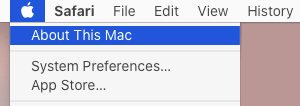
2. On the next screen, click on Software Update and follow the instructions to install the update (if available).
3. Make Sure Trackpad is Not Disabled
If you have a mouse plugged-in to your device, the problem could be due to your computer being set to automatically disable the built-in Trackpad, when a mouse is plugged-in.
1. Click on Apple logo in the top-menu bar and select System Preferences.
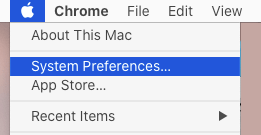
2. On the System Preferences screen, click on the Accessibility tab.

3. On the next screen, select Mouse & Trackpad in left side-menu. In the right-section, select Ignore built-in trackpad when mouse or wireless trackpad is present option.
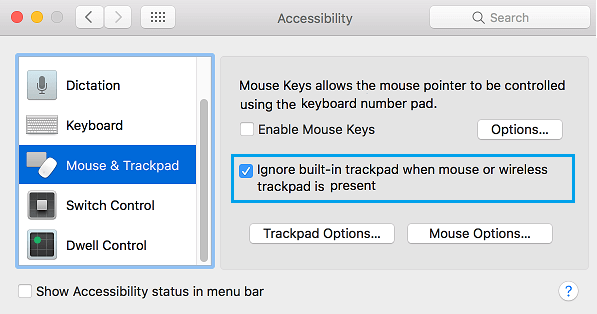
If you want to be able to use both Mouse and Trackpad, you need to uncheck this option.
4. Delete Trackpad Property List Files
The problem could be due to the Trackpad related property list files (.plist) being corrupted. This can be fixed by deleting the corrupted .plist files and creating new ones.
1. Click on the Finder on your Mac.
2. Click on the Go tab in top-menu bar and select Go to Folder option in the drop-down menu.
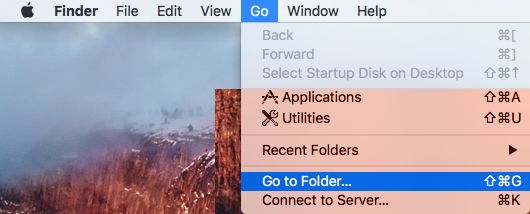
3. On the pop-up, type /Library/Preferences/SystemConfiguration/ and click on the Go button.
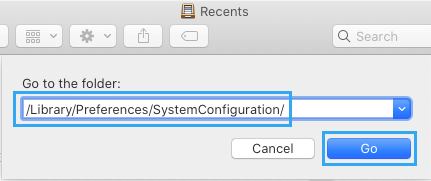
4. In the System Configuration Folder, delete com.apple.AppleMultitouchTrackpad.plist and com.apple.preference.trackpad.plist files.
Once you are done, restart your Mac and it will automatically create the required new .plist files.
5. Disable Force Click and Haptic Feedback
Users have reported fixing the problem by disabling Force Click and Hepatic feedback.
1. Click on Apple logo in the top-menu bar and select System Preferences.

2. On the Preferences screen, click on the Trackpad Icon.
3. On the next screen, switch to Point & Click tab and disable Force Click and Haptic Feedback option.
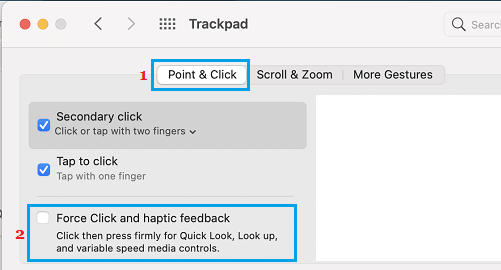
4. Restart your Mac and see if the problem is now fixed.
6. Reset SMC
MacBook’s SMC can sometimes become confused or corrupted, leading to various problems, including the issue of Trackpad not working properly.
The steps to Reset SMC on a MacBook vary, depending the model of your computer. Hence, it is recommended that you refer to this guide: How to Reset SMC MacBook.
7. Reset NVRAM
NVRAM (Non-Volatile Random-Access Memory) stores settings of most hardware components installed on a MacBook. It is quite possible that the reason for Trackpad not working on MacBook is due to corrupted NVRAM.
You can Reset NVRAM on your MacBook by using steps as provided in this guide: How to Reset NVRAM or PRAM on Mac.